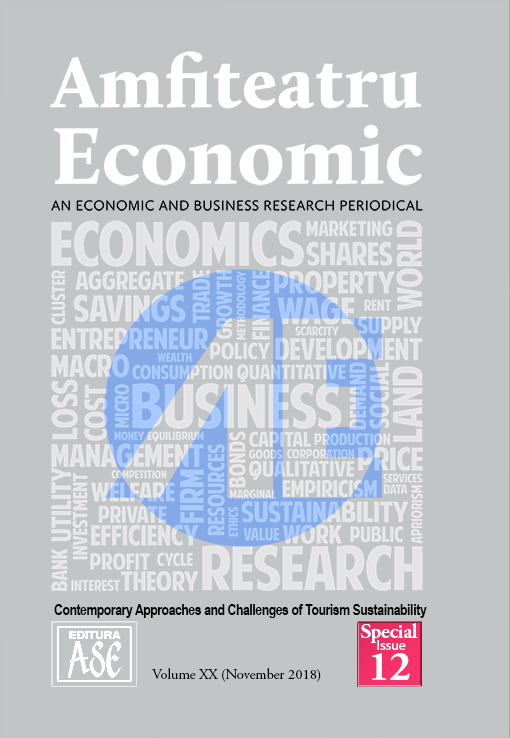CEE-16: A CLUSTER ANALYSIS BASED ON TOURISM COMPETITIVENESS AND CORRELATIONS WITH MAJOR DETERMINANTS
CEE-16: A CLUSTER ANALYSIS BASED ON TOURISM COMPETITIVENESS AND CORRELATIONS WITH MAJOR DETERMINANTS
Author(s): Delia Popescu, Iulia Monica Oehler-Şincai, Daniel Bulin, Ion Alexandru TănaseSubject(s): Economy
Published by: EDITURA ASE
Keywords: CEE; CEE-16; China; 16+1; Romania; tourism competitiveness; tourism indicators; cluster analysis
Summary/Abstract: The purpose of this paper is to identify the main groups of CEE-16 countries in terms of tourism competitiveness. Competitiveness, as part of the supply side, is addressed in view of the supply-demand correlations, and we consider the attractiveness of tourist destinations from the tourists’ perspective as the link between the two sides. For the analysis are selected exactly the 16 countries participating in the 16+1 platform initiated by China in 2011, tourism being one of the components of sectoral cooperation in this framework. We demonstrate that tourism infrastructure (its upgrading and development) is one of the main determinants of tourism competitiveness, even surpassing in importance the tourism assets. In this context, the “China factor” might play a significant role for the CEE-16 in terms of spurring competitiveness, as it is not antagonistic, but complementary with other determinants of competitiveness, including the EU funds. From the perspective of attractiveness, 16+1 cooperation can boost Chinese tourists’ arrivals in the region. In order to test these hypotheses, as part of the methodology, the authors calculate a specific travel and tourism competitiveness index (STTCI), starting from the main objectives of the 16+1 cooperation platform, namely prioritization, openness, environmental sustainability, transport infrastructure and specific infrastructure for tourism services. The authors correlate this STTCI with other qualitative indicators and obtain two categories of clusters among the CEE-16 countries. In Romania’s case, one can remark the following paradox. The cumulative amount of investment in tourism during 2000-2017 is the largest among the CEE-16 countries, corresponding to its tourism assets and the necessity to connect them; however, Romania lags behind most of the analyzed countries in terms of qualitative indicators such as revealed comparative advantage, direct productivity and multiplier effect of GDP. Therefore, the cluster it belongs to does not reflect its real tourism assets.
Journal: Amfiteatru Economic
- Issue Year: 20/2018
- Issue No: SI 12
- Page Range: 833-853
- Page Count: 21
- Language: English

